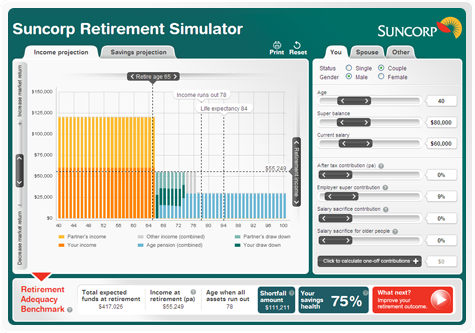Understanding Retirement Plan Fees and Expenses Can Supercharge Your Savings
Post on: 22 Июнь, 2015 No Comment

Don’t lose too much money to fees. Source: TaxRebate.org.uk.
Many Americans have an admirably trusting nature. It can get them into trouble, though, especially when they’re dealing with the financial industry. For example, per a recent survey by Rebalance IRA, nearly half of Baby Boomers — fully 46% — don’t think they’re paying any fees in their retirement accounts. That ignorance is costing them, because if they had a better understanding of retirement plan fees and expenses, they’d likely have more money in their accounts.
Over the course of 30 years, you’ll forfeit more than $20,000 in fees at just the 0.5% rate! And if you’re paying the average 1.5% rate, you’ll lose more than a third of your money — about $59,000. Over 40 years, the fees could eat up more than $190,000! That’s a big deal, because these funds are in retirement accounts meant to support you in your old age. If you’re surrendering a third or more of their value to fees, then you’re short-changing your future.
Fees can really add up. Photo: www.seniorplanning.org.
Meanwhile, retirement savers often pay unnecessarily high fees for financial advice as well. Know that you can probably pay less than you think for sound financial guidance.
Typical fees
Here’s a rundown of common fees associated with the most prevalent investments and retirement plans.
Mutual funds
Mutual funds often have a sales fee, called a load, which can sometimes top 5%. These are typically charged upon purchase as front-end loads, but they can also be charged upon your exit, in which case they might be called a back-end load, deferred sales charge, or redemption fee. Fortunately, there are gobs of no-load funds out there, and savvy investors seek them out. Read the fine print, though, because some no-load funds manage to charge a purchase fee or redemption fee or other load-like fee, though not by that name.
Funds also often charge a 12b-1 fee, which goes toward the marketing and sale of the fund. They average less than 0.5% for domestic stock funds. The 12b-1 is part of the overall fund expense ratio, which gives you an idea of the total annual fees you’ll pay. The expense ratio divides a fund’s operating costs — which include paying managers, marketing, administration, taxes, accounting services, and so on — by its average assets.
The average expense ratio for stock funds was 0.74% in 2013. So if you’re looking at a fund with a ratio of 1.2% or 1.7%, know that you can do much better. Index funds, which require little active management, tend to have much lower expense ratios; some even charge less than 0.2%.
Exchange-traded funds also charge expense fees that are generally lower than those of mutual funds. An expense ratio of 0.74% can still eat away at your returns over time. In general, the lower the expense ratio, the better.
401(k) accounts
You will usually be charged a variety of fees from a variety of sources. Thanks to some recent legislation, your quarterly statements must now disclose many fees you’re paying — but not necessarily all of them, because some are rolled into investment expenses that don’t have to be disclosed.
There will be a management or administrative fee from the plan administrator, often a big-name financial-services company. The plans it offers feature a variety of investments that employees can choose for the money in their accounts. These might include stock funds, bond funds, money market funds, and more. Each will usually levy fees of its own.
One handy tool is BrightScope.com. where you can look up 401(k) plans at many different companies — including, perhaps, your own — and see how they rate on several measures, such as the cost of the plan. You can compare your company against peers and others, too.
The CNN Money website has a handy calculator that details just how much 401(k) plan fees cost the employees at many companies. If you find that your plan’s fees are too high, or that the investment options it offers carry unnecessarily high fees, ask your employer to look into lower-fee options.
IRAs
The IRA fees you pay are generally tied to the financial institution where your IRA lives. Most major brokerages, for example, offer IRAs, both traditional and Roth, and charge different fees for them. Take a glance at our Broker Center. for example, where you can compare a bunch of respected brokerages and see some of their fees broken out, along with links to learn more details about their retirement account offerings.
Some brokerages’ IRA fees are detailed in our IRA Center. To give you an idea of what costs you might face, know that many good brokerages charge just a few dollars per trade placed online in retirement accounts (and regular accounts, too), though some charge upward of $30 if you want to talk to a human and have them do it for you.
What to do about it all
The main lesson here is to be aware of what you’re paying and determine how much it’s costing you. If your brokerage’s fees are much higher than you can get elsewhere, consider switching brokerages. If your 401(k) plan offers some investments with high fees, focus on the lower-cost ones if they fit your needs. And let your company’s HR department know if you’re not happy with the offerings.
Finally, here’s some good news: Fees for the average 401(k) shrank slightly between 2012 and 2013 from 1.46% to 1.44%. There’s some reason to hope they will continue to shrink as more people become aware of steep fees and demand lower-cost options from their plan administrators.
Great for many retirement accounts: Top dividend stocks for the next decade














